What are some unique Japanese foods?
You might know of sushi and such, but what about octopus balls? Or the famous Japanese-style pancake? Haven’t heard of those? If not, then no worries. In this quick guide, you’ll learn about the many kinds of Japanese foods and dishes.
So, if you’re wondering what makes Japanese food unique, then take a look.
1. Sushi
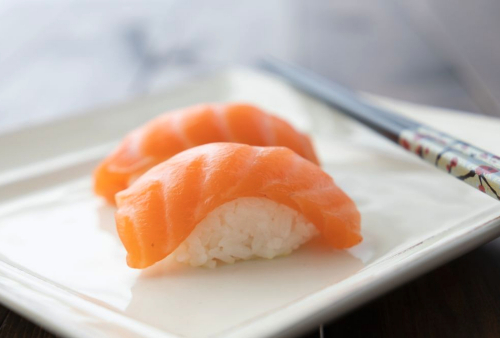
- Quick answer: Vinegared rice with raw fish, sea weed and occasionally vegetables.
Sushi is probably one of the most well known and unique Japanese foods. Sushi consists of vinegared rice, nori (Japanese seaweed), raw fish, and occasionally vegetables. Despite being known for “raw fish,” the most important part of sushi is the rice. Sushi also comes in many forms: nigiri (in the image above), oshi (rectangle shaped), temaki (wrapped in a seaweed cone), maki (wrapped in a seaweed cylinder), chirashi (a bowl of fish on top of rice), and inari (rice covered by fried tofu).
if you’re thinking that sushi is mostly “rolls,” then you might be thinking of American Sushi. And you’ll need to know the differences between Japanese sushi vs. American sushi.
2. Miso Soup
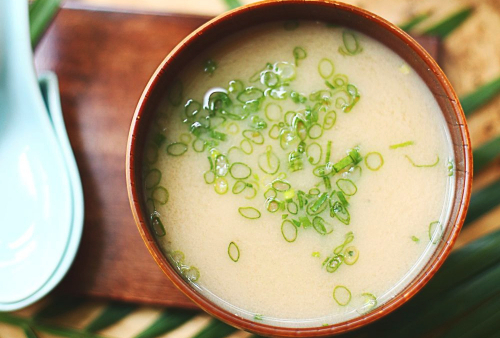
Of all the types of Japanese soup out there, miso soup has to be the most popular.
- Quick answer: A salty miso-based soup with broth, tofu, vegetables and seaweed.
Many Japanese people feel that miso soup is the taste of home. This soup almost always accompanies a home cooked Japanese meal. It is a soup made with bonito or kelp broth, and mixed with miso paste (fermented soy beans). The ingredients inside the soup can depend on the household, but may include seasonal vegetables, wakame seaweed, tofu, and green onions.
3. Umeboshi
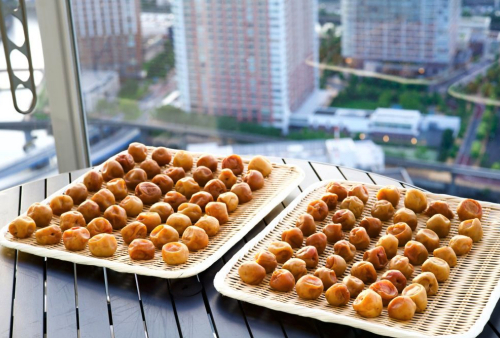
- Quick answer: A salty, pickled plum.
Umeboshi is a pickled and salty plum that can be shocking if you try it for the first time. It is extremely sour because of the amount of citric acid and amount of salt. It’s a side dish for rice that can be seen inside rice balls and bento boxes. Throughout Japanese history, Umeboshi has been eaten for its health benefits and medicinal properties.
4. Natto
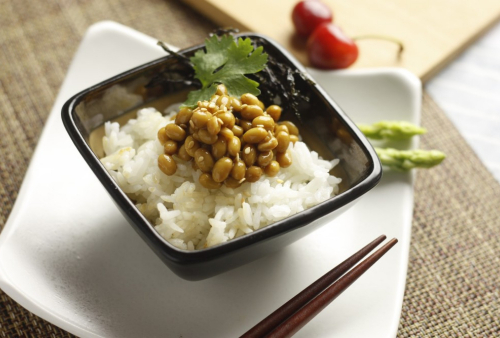
- Quick answer: Fermented soybeans on top of rice.
These are fermented soybeans that have a stringy and sticky texture. It can look unappealing and it’s an acquired taste. However, in Japan it is popular to eat this on top of rice, especially for breakfast. Natto also boasts health benefits such as lowering blood pressure and cholesterol.
5. Ochazuke
- Quick answer: Tea on top of rice and various toppings.
This is a popular food for late nights, as a snack, or for breakfast. It’s a dish where you pour tea on top of rice with toppings such as plums, salted seaweed, or salmon. It’s an easy meal that can be made with common Japanese pantry staples. The umami in the tea enhances the toppings and rice, into a flavorful broth.
6. Okonomiyaki
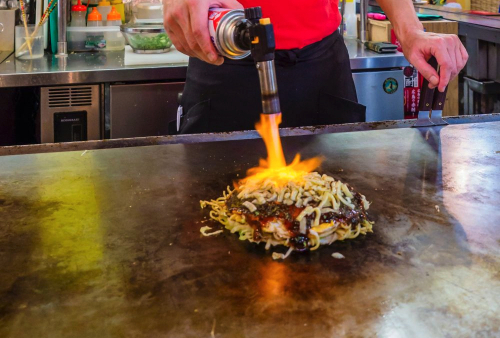
- Quick answer: A Japanese style pancake with sauce, mayonnaise, cabbage, and more.
Okonomiyaki is a savory pancake that can be found all over Japan. Inside the pancake, you’ll find cabbage and meat. It’s usually topped with a worcestershire-like sauce, japanese mayonnaise, and green laver flakes. If you go to an okonomiyaki restaurant, they will make the pancake right in front of you on a hot pan.
7. Oden
- Quick answer: A mix of eggs, fish cakes, and radishes in a warm broth.
If you find yourself in Japan during the winter, you don’t want to miss oden. This is a type of food where they will have various fish cakes, eggs, radish, and other ingredients in a mild bonito based broth. It has a warm and comforting flavor and you can usually choose which ingredients you want. This is available all around Japan, even inside convenience stores.
This is one of my favorite unique Japanese foods.
8. Osechi
- Quick answer: A traditional New Year’s meal with different dishes.
This is a traditional meal made during New Year’s in Japan. It is eaten from New Year’s day for several days. It is traditionally in a box filled with different dishes such as cooked fish, seaweed, black soybeans and each has a symbolic meaning.
9. Anmitsu
- Quick answer:A dessert with rice cakes, jelly and red bean paste.
During the summer months, anmitsu is a popular Japanese dessert. It includes kanten (agar jelly), mochi rice cakes, beans, red bean paste, and topped with a sugary syrup. You can enjoy different textures and it is refreshing to eat.
10. Ozoni
- Quick answer: Soup for New Year’s day with mochi rice cakes.
This is a traditional soup that is eaten on the morning of New Year’s day. It includes a broth with mochi rice cakes inside. The flavor of the broth and shapes of rice cakes can vary depending on the region.
11. Tempura
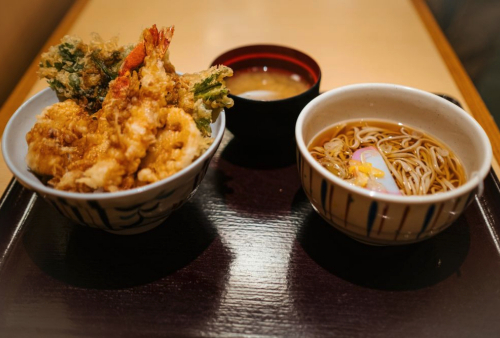
- Quick answer: Battered and fried vegetables and meat.
Tempura originated from the Portuguese who were living in Nagasaki in the 16th century. As time went on, it has become a uniquely Japanese dish. This dish includes vegetables, meat, and fish that is lightly battered and fried. It’s normally enjoyed with a dipping sauce or with salt. It’s a popular lunch and dinner dish.
12. Takoyaki
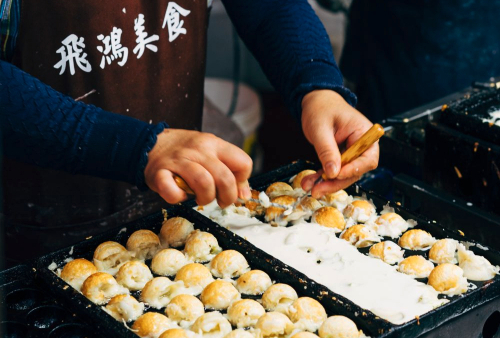
- Quick answer: Octopus chunks mixed with batter and shaped into a ball.
This is a Japanese street food snack that is shaped like balls. The balls are made out of a batter that’s filled with chunks of octopus, pickled ginger, and crispy tempura scraps. It is cooked in a special mold to give the distinct shape. The toppings can include japanese mayonnaise, a savory sauce, bonito flakes, and green laver flakes. It’s most commonly found in Osaka where it originated.
13. Tsukemen
- Quick answer: A dish where noodles are dipped into a separate broth.
If ramen has too much broth, you can try tsukemen. This is a dish where the ramen broth is concentrated into a strong flavored dipping sauce. The noodles are thicker and it is made to be dipped into the sauce before slurping. This dish can be found in ramen shops or special tsukemen shops.
14. Tonkatsu
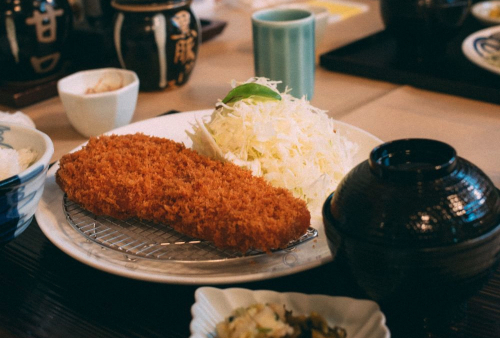
- Quick answer: Breaded and fried pork cutlets.
An iconic Japanese dish is tonkatsu, which are breaded and fried pork cutlets. It’s usually served with thinly sliced raw cabbage and rice. It also comes with a special tonkatsu sauce. Compared to fried pork dishes in other countries, Japanese tonkatsu features thicker cuts of meat and a distinct light and crunchy breading on the outside. You can eat this meal for lunch or dinner, and can also find it sold in supermarkets.
15. Udon
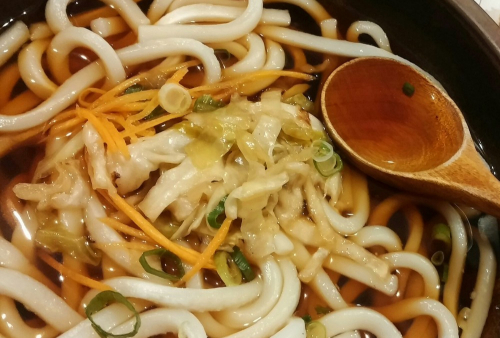
- Quick answer: Thick wheat noodles. Can be eaten hot or cold.
This is one of the oldest noodles in Japan. It is wheat-based and has a nice bouncy texture. Depending on the region, you’ll find different shapes and textures of udon. It can be enjoyed cold with a dipping sauce or hot inside a soy sauce based broth. Toppings can include egg, tempura, or green onions.
16. Soba
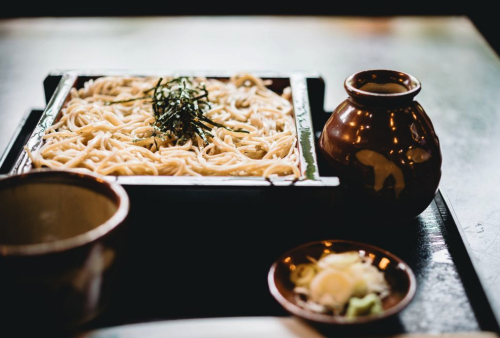
- Quick answer: Thin buckwheat noodles.
Soba is a buckwheat based noodle that has a strong texture. It is enjoyed year round and it’s a popular food in Japan. Like udon, it can be eaten cold or hot and with various toppings. Soba shops will also often serve a special tea/broth made with the water that boiled the noodles.
17. Sukiyaki
- Quick answer: Hotpot dish with beef slices, vegetables, and more.
This is a hot pot dish that features simmered beef slices, vegetables, tofu, green onions, shiitake mushrooms, and other ingredients. It’s cooked inside a sauce made out of soy sauce, mirin, and sugar. Sukiyaki is usually a shared dish at the table and popular during the winter months.
4. Conclusion
Now you know about some unique Japanese foods.
Are there any others missing from this list?
Have you ever tried any? Which is your favorite?
Leave a comment below.
Team IJ
P.S. You may also be interested in the types of weird Japanese foods
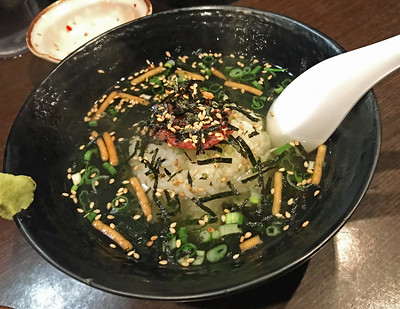
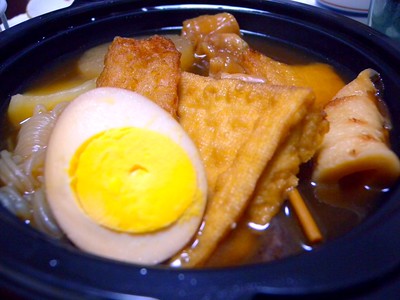
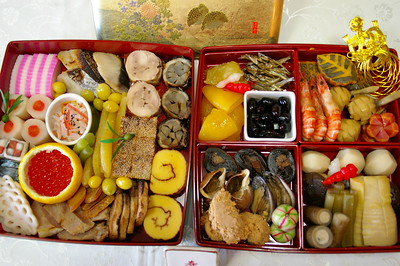




[…] why I’m here. To teach you Japanese restaurant phrases that you can use to order yummy and unique Japanese foods with no […]
[…] is one of the most unique Japanese foods out […]